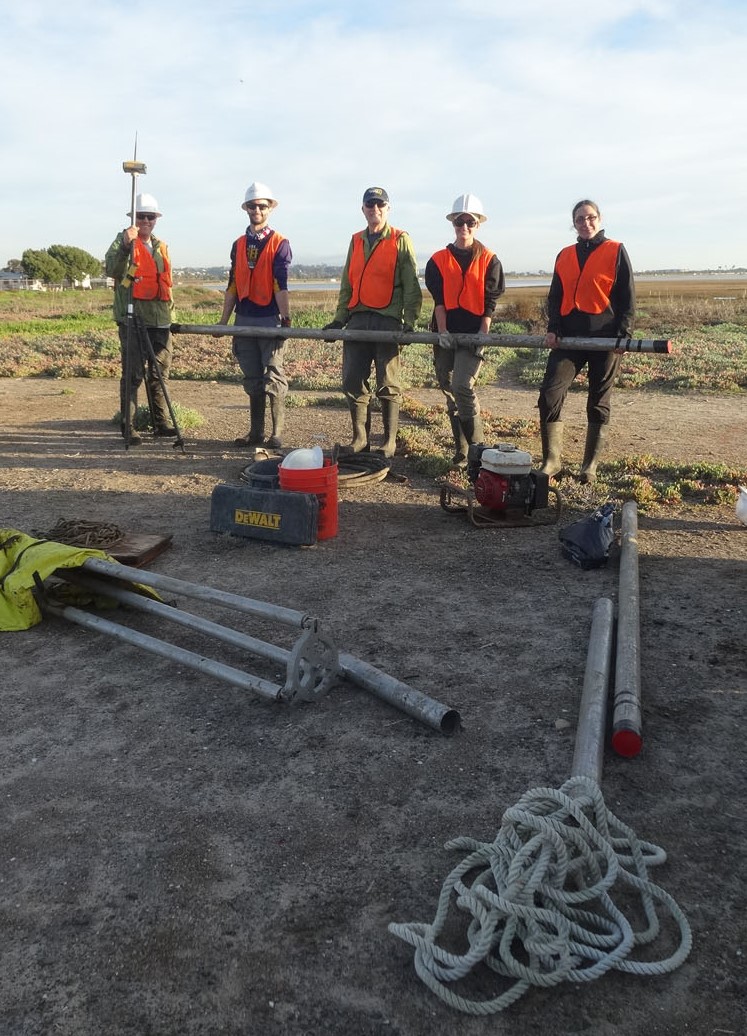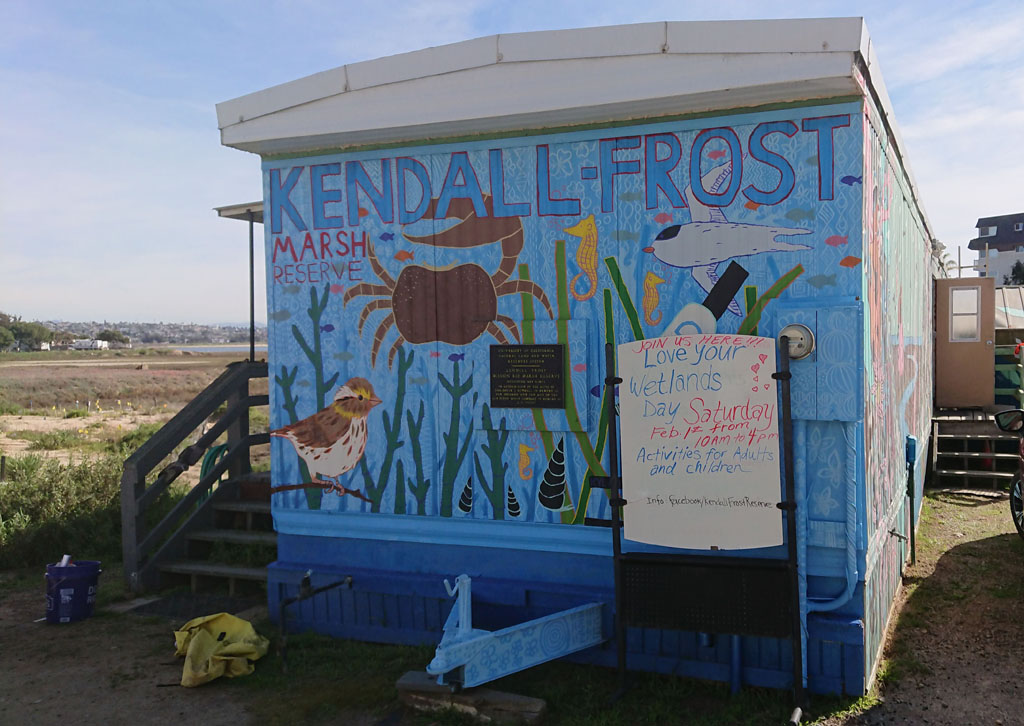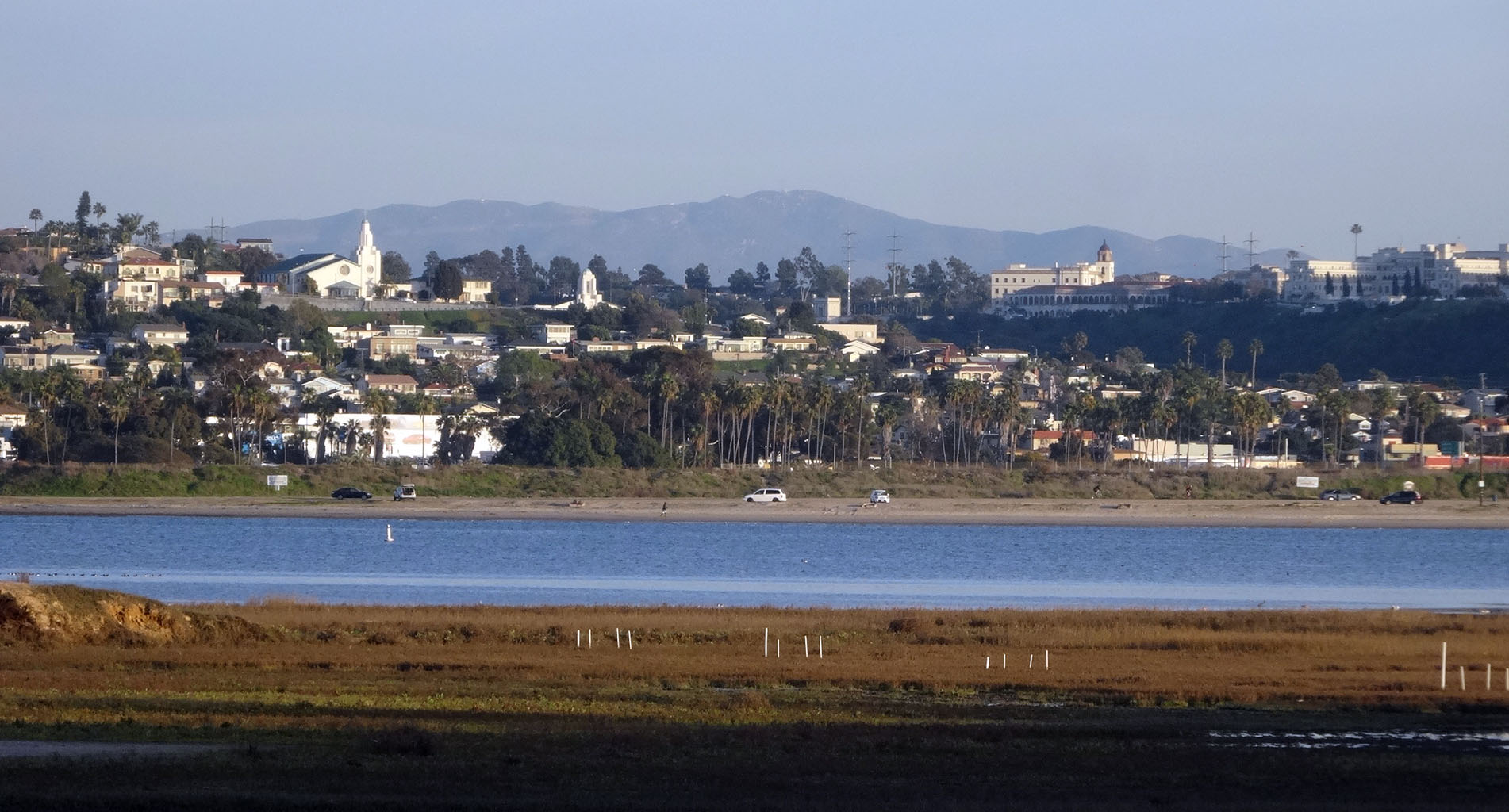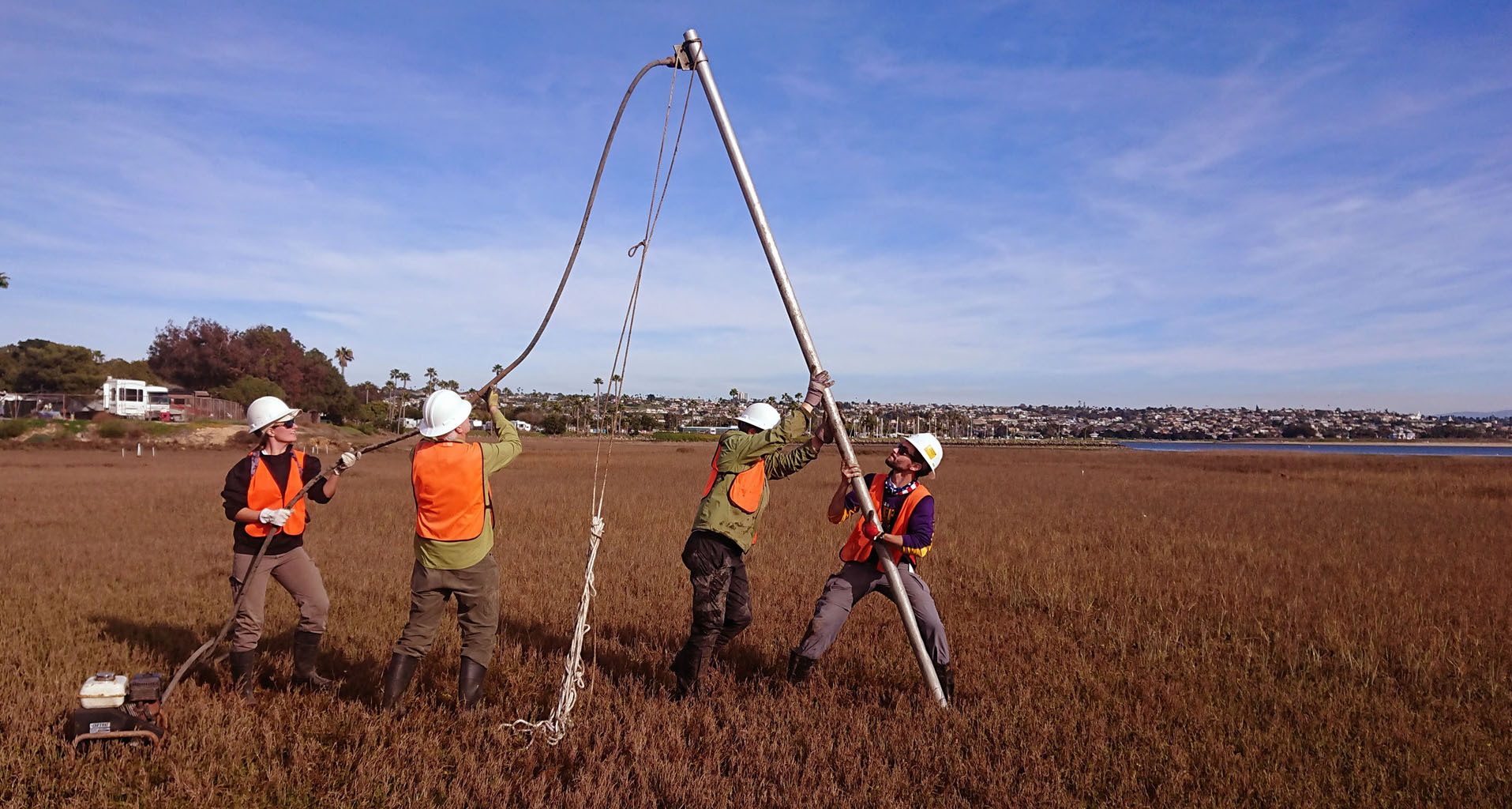In February 2020, right before the COVID-19 travel restrictions, we cored Mission Bay Marsh in the Kendall-Frost Mission Bay Marsh Reserve (San Diego). Coring was performed within the framework of the MOTION project (2019-2021), led by Ana Ejarque (ISEM, CNRS) and R.S. Anderson (Northern Arizona University). This project was funded by the CNRS through the Programme International de Coopération Scientifiques (PICS) action.
We cored the marsh in collaboration with Alex Simms (UCSB), and used a vibracorer to get a continuous 4 meters-long sedimentary record covering the last ~4000 years. Through the study of pollen, NPPs and macrocharcoal in the record within MeSCAL we will reconstruct vegetation and land-use changes related to Kumeyaai prehistoric settling as well as the earliest evidences of landscape change in SoCal following Spanish settlement. The Spanish Presidio and the San Diego de Alcalá Mission, the oldest and earliest occupied Spanish settlements in California, are only located ~5 and 10 km away from the marsh.



The Kendall-Frost Marsh Reserve (UCSD) and the Northern Wildlife Preserve protect the last 40 acres of a larger wetland (2000 acres) that has been mostly destroyed by San Diego’s urban development. The sediments of this little marsh, an ecological treasure in a highly developed urban area, archive millennia of environmental & landscape history of the San Diego area.

